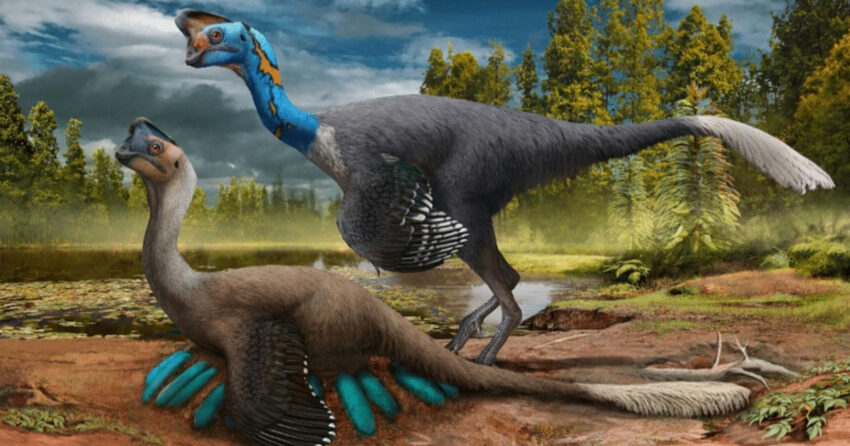The image of Oviraptor, a small dinosaur from the Late Cretaceous period, has undergone a dramatic transformation over the decades. Once branded as a sneaky “egg thief,” Oviraptor is now celebrated by paleontologists as a caring parent. But how did this shift in perception occur, and what evidence supports the idea that Oviraptor was a devoted caregiver?
The “Egg Thief” Misunderstanding
When Oviraptor fossils were first discovered in the 1920s, they were found near a clutch of eggs. This led to the assumption that Oviraptor was preying on the eggs of another dinosaur species, Protoceratops. The very name “Oviraptor,” which translates to “egg thief,” was a reflection of this misconception.
However, a groundbreaking discovery in the 1990s changed everything. Paleontologists found Oviraptor fossils closely associated with nests containing eggs that were later confirmed to be Oviraptor’s own. This revelation suggested that the dinosaur wasn’t stealing eggs—it was likely protecting its offspring.
Evidence of Parental Care
Several lines of evidence now support the idea that Oviraptor was a good parent:
Fossilized Nests
Oviraptor nests reveal a sophisticated arrangement, with eggs laid in a circular pattern around a central open space. This structure likely allowed the parent to sit in the middle, incubating the eggs without crushing them. Such careful arrangement indicates a degree of parental investment.
Brooding Behavior
Fossil specimens have been discovered in a brooding posture, with Oviraptor’s arms spread protectively over the eggs. This behavior is strikingly similar to modern birds, which are direct descendants of theropod dinosaurs like Oviraptor.
Eggshell Thickness
The eggs associated with Oviraptor nests have thick, sturdy shells, suggesting that the parent may have actively regulated temperature and provided protection.
Rapid Growth of Hatchlings
Studies of Oviraptor fossils suggest that hatchlings grew quickly, which may indicate that parental care extended to ensuring a safe environment for the young during their most vulnerable stages.
Comparisons to Modern Birds
The evidence for Oviraptor’s nurturing behavior aligns with what is seen in modern birds. Birds exhibit a wide range of parental care, from incubating eggs to feeding and defending their chicks. As close relatives of dinosaurs, birds offer valuable insights into the behavior of their prehistoric ancestors. Oviraptor’s brooding posture and nest arrangement strongly parallel these avian behaviors.
Redefining Oviraptor
The shift from “egg thief” to devoted parent underscores the evolving nature of paleontology. New discoveries and advanced technologies, such as CT scans of fossilized eggs, continue to refine our understanding of dinosaur behavior. Oviraptor’s transformation from villain to hero is a reminder of the importance of interpreting evidence carefully and remaining open to new interpretations.
Conclusion
Far from being the sneaky predator its name suggests, Oviraptor appears to have been a caring and attentive parent, devoted to the survival of its young. This remarkable creature’s story not only sheds light on the lives of dinosaurs but also strengthens the connection between ancient theropods and modern birds. Oviraptor was likely not just a good parent but a symbol of how life’s nurturing instincts transcend millions of years. For more information click the link https://dinorepeat.com/

